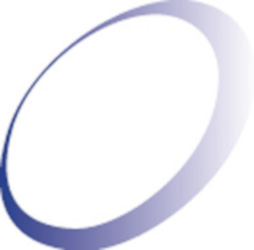Saarbruecken, March, 30th, 2023. A wafer-thin, supple silicone film is the only input device where a controller or keyboard would otherwise have been. Professor Stefan Seelecke and his research team at Saarland University are endeavouring to enable humans and computers to communicate more intuitively and naturally in the future. The communicative feedback, as provided by the skin’s sensor technology, can be realised here by means of tapping, vibrating, pressing or even sound signals.
When only a functional material stands between the human body and the sensually perceptible world and human communication can be transmitted verbally and non-verbally in the way that humans are accustomed to and have learnt to do in evolutionary terms, then the interface between the virtual and the real world has been reached.
The material developed by Professor Seelecke’s research team is a dielectric elastomer approximately 50 micrometres thick with multifunctional applications. The silicone film is printed on both sides with a highly stretchable electrode layer and works very sparingly with electric fields. When the researchers apply an electrical voltage, the film compresses. ‘It moves to the side and increases its surface area. This also changes the measured values of the electrical capacitance,’ says Paul Motzki. In this way, the film is both a sensor and an actuator, a kind of mini-motor, explains Stefan Seelecke. Equipped with these signalling devices, the film provides the computer with information as well as haptic, acoustic or visual information.
Areas of application are conceivable, preferably in the textile sector, gaming or work gloves, or, as became clear during the pandemic, transmitting touch sensitivity.
An instrument of this kind can also make specifications via textiles, such as the glove in the example, at the interface to the labour shortage with regard to the lack of skilled workers, just like augmented reality through VR or AR. Scientists Giacomo Morretti and Sebastian Gratz-Kelly from Seelecke’s team have lined a work glove with the film, which lets the computer system know how the industrial fitter moves their hand and fingers. In a virtual Industry 4.0 environment, the smart glove could support the worker by recognising gestures when selecting a component or by measuring gripping force when tightening screws. It could use warning tones to prevent errors during assembly. The fitter could also control processes simply by moving their hand.
Another example of an application is a piece of clothing that allows children in quarantine to feel their parents‘ physical proximity: like a second skin, a jumper could transmit a tactile cuddle when mum or dad strokes a second smart textile elsewhere, which transmits this signal. ‘We want to create the opportunity for children in quarantine to meet their parents in a virtual space. Our aim is to create a realistic, emotional immersion in the experience that incorporates the sensory modalities of sight, hearing and touch,’ explains Martina Lehser.
‘With the help of algorithms, these motion sequences can be calculated in a control unit and further processed in a computer system,’ explains PhD student Sebastian Gratz-Kelly.
‘This ranges from high-frequency vibrations to stepless lifting or tapping movements or holding a certain position. We can change the frequency and vibrations as required,’ says Sebastian Gratz-Kelly. With the right control, the foil can be felt to press against the user’s finger, for example. With rapid stroke movements out of nowhere, it could create the impression of the edges of a slider and simulate a slight resistance like when pressing a real switch. The film can also produce sounds, even several at the same time, by the researchers controlling it in such a way that several oscillation frequencies overlap.
Seelecke’s team is working on numerous research projects and other doctoral theses to further develop their film drives for various applications and also to network them so that they can communicate and cooperate with each other like a swarm. To this end, they want to further miniaturise the technology in order to equip surfaces with new capabilities.
The researchers want to transfer the results of their application-orientated research into industrial practice. To this end, they have founded the company mateligent GmbH from the chair.
The text was translated with the support of DeepL Translator, a translator with artificial intelligence. Comprehension errors are possible.
More Information:
https://imsl.de/projekte – Videos about the projects of the chair
https://imsl.de – Chair of Intelligent Material Systems
https://mateligent.de – Spin off mateligent GmbH
https://zema.de/ – Am Zentrum für Mechatronik und Automatisierungstechnik (Zema)



Schreibe einen Kommentar